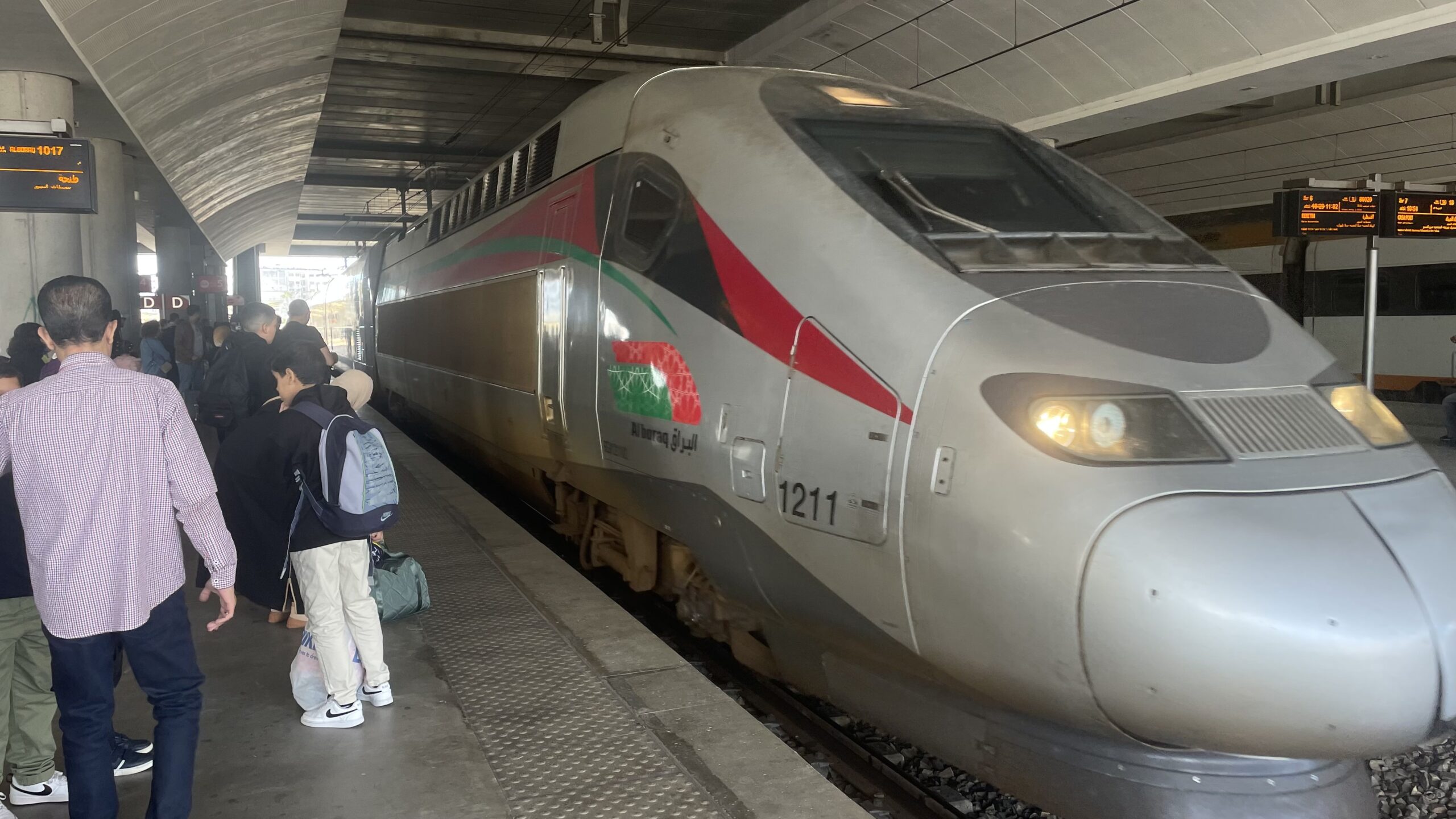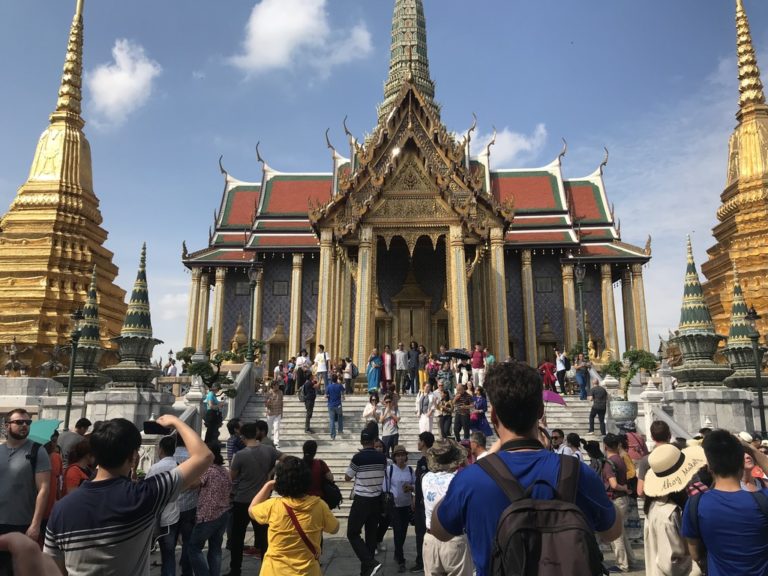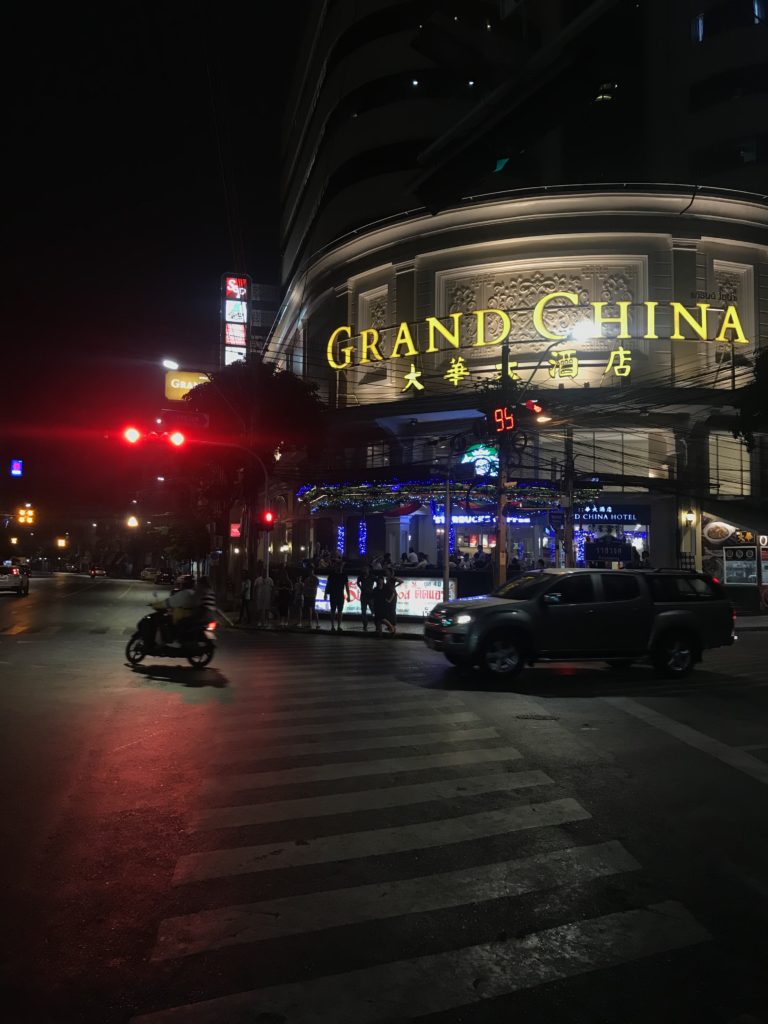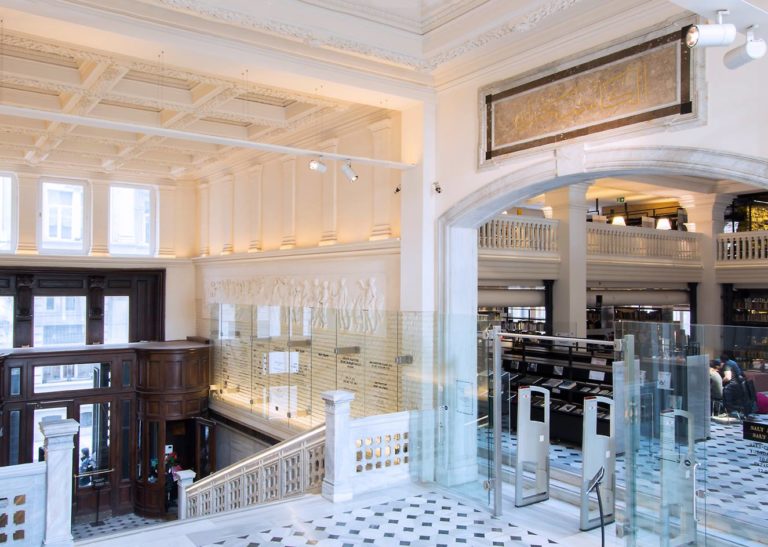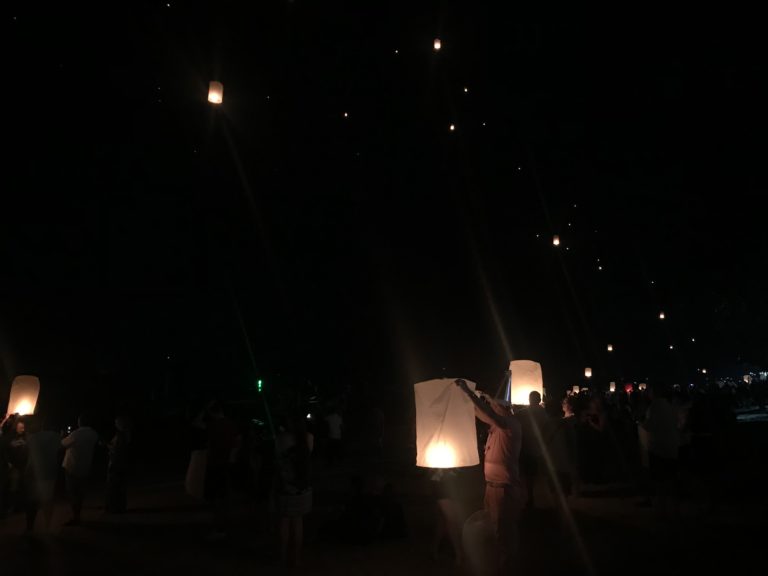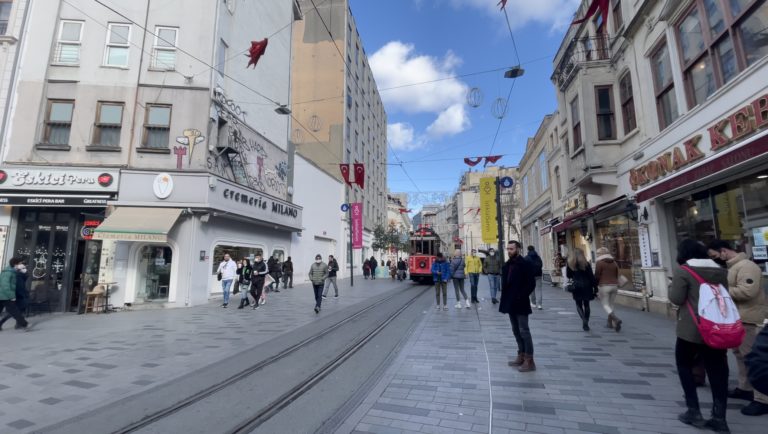A Refreshing Ride on Al-Boraq from Rabat Agdal to Tangier
You’ve packed your travel pack for a trip on Al-Boraq, from Rabat to Tangier. Internet friends told you that Morocco is known for a wide-variety of adventures—whether its north, central, east, west or south. But you have not crossed large bodies of water solely for adventures. Your main reason—having traveled so far from your home country—is to feel human again. The idea of feeling human sounds simple but for the past few years, your home country made you feel soul, as if you’re living to live but to pay your next credit card bill, make sure the assignment is complete by End of Day, or pay large sums of taxes in which you don’t know where they’re going towards.
Beside your bed, you double check your bag, making sure everything you packed everything you’d need for the next three days. Once you do, you walk to the hotel room’s windows. From the thirteenth floor, you look out into the city; the sun is slowly breaking apart the clouds. Rabat, the capital of Morocco, makes the country seem like its far from a third world country. It is clean and people drive in Audi, BMW, and Mercedes as if they are inexpensive cars.
Now that the sun is peeking through the clouds, the locals are out and about, attending to their business: kids carrying their school bags, construction workers at a nearby site, and some people seated at a cafes people-watching. You turn, and looking at your suitcase, you hope you find it—and everything inside—the way you left it until your return. Tossing your backpack over a shoulder, you leave your room.
From Hotel to Rabat Agdal to Take Al-Boraq to Tangier:
Leaving the hotel, a pair of taxi drivers wave their keys and call in your direction. You made the mistake once and will not make it again. Putting your head down, you ignore their call. Because you’re a foreigner, some drivers will take advantage of you. The meter is broke, a taxi drive once told you. A ride from the station to hotel is fifty dirhams.
Never again, you think.
Rather, you walk a short distance from the hotel, and then stand near the double two-way street. Taxis are readily available. A few hundred taxis roam Rabat daily; each has their taxi number painted on the side. Still, because you look like a foreigner and you’re standing on the side of the street, they continue honking as they pass by. You start to wonder if it’s worth taking a taxi. Money has never been a problem to you, but what you hate most is getting taking advantage of. Looking at your wristwatch and knowing you still need a train ticket, you wave to the next taxi. The driver stops almost immediately.
“Rabat Gare,” you say. You know that Gare is station in French. The driver who doesn’t have a passenger with him, says something in darija and then makes a hand gesture. Without the hand gesture, you wouldn’t have known what he meant. You added, “al-Boraq,” the name of the high-speed train. Sensing the communication barrier is still between you two, you pull out your phone.
“Okay, yes, come,” he says, waving you inside. When inside, you smell cigarettes radiate from the man’s clothes. Top of his head is half bald, and he has a scruffy beard. “Rabat Agdal.” Gesturing with his index and middle fingers, he adds, “Rabat Agdal and Rabat Ville.”
When you check your map, you understand what the driver meant. Rabat has two train stations: Rabat Ville and Rabat Agdal, where the al-Boraq stops. You tuck your phone away, and put your backpack in front of you as the taxi driver weaves through cars and busses. As he’s driving there, you make sure he has the meter on, which he does. It is a quick ride. You arrive at the station, where at least half a dozen taxis await travelers. You hand him a ten-dirham coin, and though the meter only said nine and a third, you step out from the taxi without taking the change. He thanks you.
He at least didn’t scam me, you think. Fifty dirhams is not like ten dirhams.
Exploring Rabat Agdal Station, Where Al-Boraq Stops
Rabat Agdal is a large with an intricate design that keeps you mesmerized few moments. Though it is not your first time at the station, it is the first time you get a glimpse of it during the day time, and not when you just landed after hours of plane rides and jet lag. As an architect, it is a pleasure to stand there and admire it. On the right, you can see the train platforms; a gate stands in-between. A couple cafes are outside near the entrance. A few tables are occupied—people seated alone, with a partner or their families—enjoying their breakfast. Many people, seated at cafes and entering the station, have suitcases by their hand.
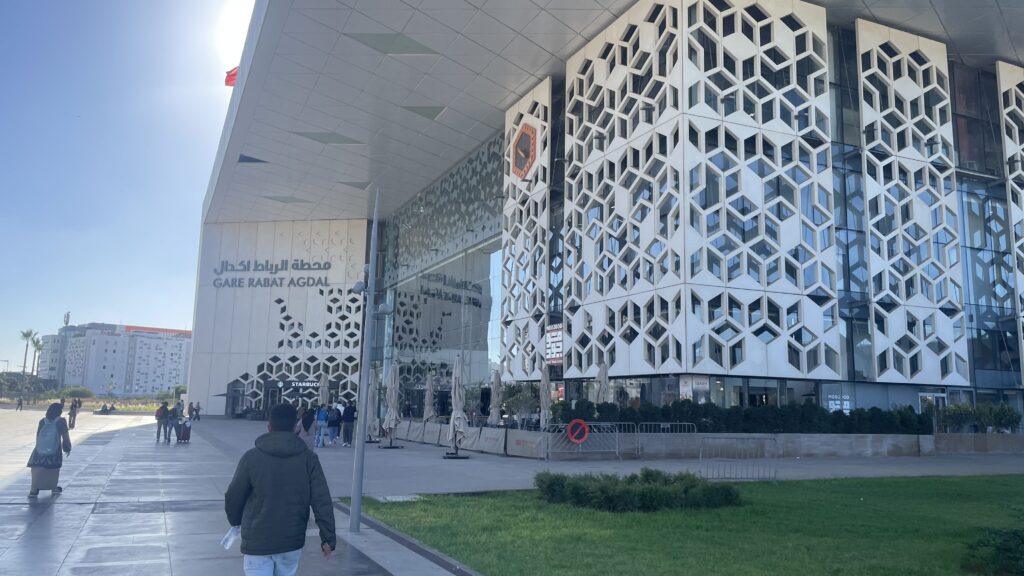
At the glass doors, a man puffing a cigarette slightly bows to you. He holds the bow and the long look as you enter the station. You have become accustomed to the looks, and you somewhat expect them wherever you go. Most of the station is made of glass, revealing its insides to the people outside. You pause again, taking in your surroundings. Back in your country, you were always in a rush. But now, you want to settle yourself and remember your goal for the trip: return that ability to feel human again. Something tells you that you’d have to slow down, and that you felt non-human anymore because of the fast pace life drove you.
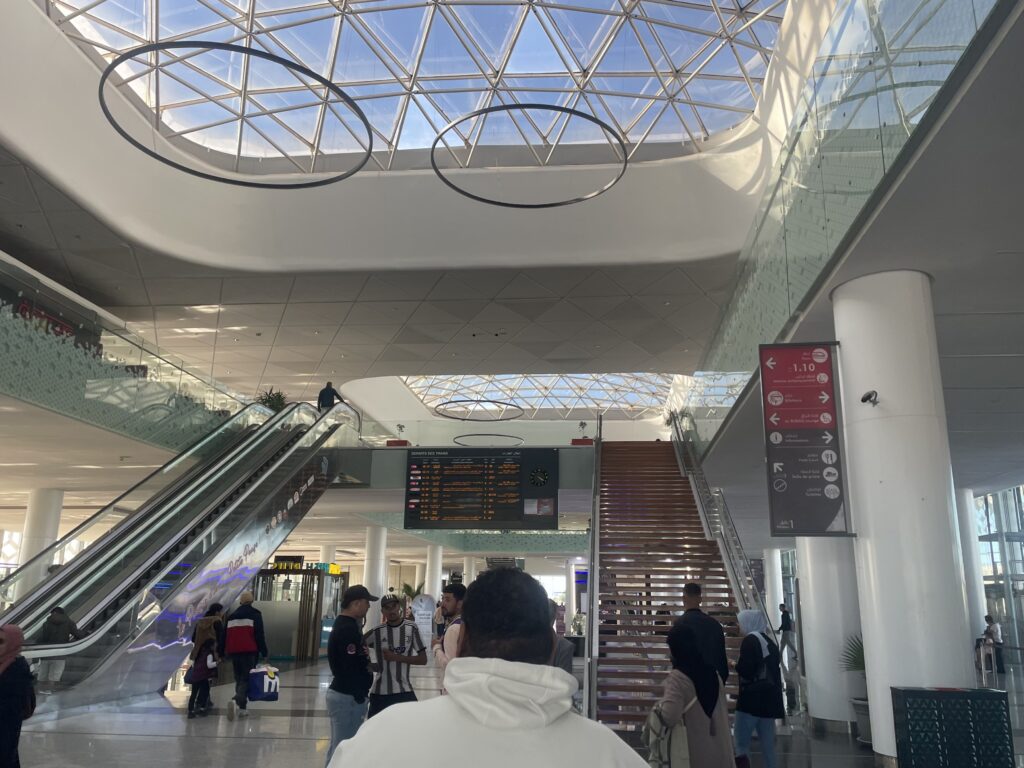
The first floor has nothing of major interest, a couple bathrooms, escalators, and stairs. You stand on the escalator, and it slowly takes you to the second floor. A mid-aged woman passes by you on the left, and looks back. You feel as though, in order for you to feel more human, you need to change certain things about yourself. That, you not only have to change your outside world, but also have to change your inside world. You smile in her direction, but she’s already four steps up and climbing. You also realize that eventually, in this trip, you have to make friends—something you’re not very great at.
The second floor—heart of the station—has sunlight shining in. There are eight platforms, each has an escalator that goes down to its respective platform. A few meters ahead, centrally-located, yours eyes are drawn to an exquisite set of stairs. They are made of shiny, wooden planks with steel beams. You turn right and walk to the ticket office. It has two parts: an area with ticket agents and another area with machines. To save time and trouble, choose the machines.
Not happening again, you think. Arriving in Morocco, you landed in Mohamed VI Airport. From there, you took the another train, not Al-Boraq, to Rabat via Casablanca. Long story short, the ticket agent went to get change for your two-hundred-dirham bill and by the time she return the train was gone; you had to wait an hour for the next one. It was not completely the agent’s fault, but given there are machines available in Rabat Agdal, you choose them over ticket agents.
But it is not all great when it is finally your turn. You put in your destination, use your credit card, and then get an error message. You’re confused; all your cards are available for use internationally, and they even have no foreign transaction fees. With only one working machine, the other is broken down, people are antsy to hurry you. You try a second time with a different card but it does not work. Rather than continue to hold the line—hearing a few frustrated grunts behind you—you step aside for the next person. You watch the man purchase his ticket without any problems. Seeing that he used a Moroccan card, Attijariwafa Bank, and that you used your card to pay the hotel a few days ago, you conclude that the problem stems from their lack of compatibility. Despite the long line for a ticket agent, it moves along fairly quickly. Instead of one agent, there are six agents at Rabat Agdal. Moments later, it becomes your turn.
“Hello,” you greet the young man in front. He responds with a smile and greeting, in broken English. “I want a ticket to Tangier on Al-Boraq.”
“Eleven-twenty?”
“Yes.”
“Première classe, deuxième classe?”
You understand little of French; you took two classes back in high school. “Second class.” But as you said that, you wonder if you should have taken first class. You still have not tried first class. With more trips ahead, you will have more chances to go first class. The interaction goes smoothly, without him needing change; he hands you a one-way ticket to Tangier on Al-Boraq, with your change. It came to be two hundred and five dirhams. You tuck in your ticket into your back pocket and put your change into your front pocket.
With more time on your side, you explore the train station. At the third floor, you do a 360-view spin. From there, you can see parts of the first and second floor. The third floor is an open area with many tables available and food shops around the perimeter. Despite it being a food court, it is much quieter than the second floor. Only a handful of tables are occupied with one or two people. But you can imagine that during lunch time, the area bustles with hungry travelers. You pass by a pair of students working on their math homework. Both are wearing headphones and one is wearing a headscarf and the other is not. At another table, you see a man talking on the phone with a frustrated tone. You use the bathroom and then go out into the third floor patio. Two men are seated outside, looking watching the trains that arriving and departing. On the table, there are two cups of black coffee and one cigarette. Its scent hits you almost immediately as you stepped outside. In addition, you feel the increasing heat coming from the sun. You pass their table, and lean near the edge, looking out to the trains. There are three trains stopped at the station: two that travel at regular speed and one is the high-speed train. Reading the screens, the two regular trains are heading to Kenitra and Marrakech. An Al-Boraq train had just stopped. Thinking it is heading to Casa Voyagers, you find yourself mistaken when you read the platform screen. It reads: 11:20 Al-Boraq to Tangier from Casa Voyager with stops at Rabat Agdal and Kenitra.
Boarding Al-Boraq, from Rabat Agdal to Tangier
When you see the screen, a mental switch turns on causing you to run inside, hold your bag tightly over your shoulders, and run down to the second floor. On the intercom, you can hear a lady speak in French saying that the train to al-Boraq is at train track number four. Thankfully, the boarding areas are clearly labeled, number one through eight. You show your train ticket to the man near the escalator to platform four. He gestures down the escalator. You’re not sure how well the Al-Boraq is in terms of schedule. The airport train left right on schedule but the train from Casablanca to Rabat was a few minutes late. You take no chances, and run down the escalator. The train is ready to leave, you are one of the few last passengers to board. A man with an Al-Boraq uniform—black, red, green in color and a conductor cap—gestured for your ticket. You show it to him, wanting to hurry and he points to the front of the train. You’re not sure what he meant. But then, when you check your ticket, still rushing to the front, you find this train has assigned seating. Near the door of each train segment, there is a screen that says the origin station, destination station, train number, and cart number. Your seat is located at cart number five. You just passed number three. Cart number four is the food cart; outside it, in English letters, it reads Cafeteria.
You can’t but help thinking: Moroccans really do like to eat. Great food, though.
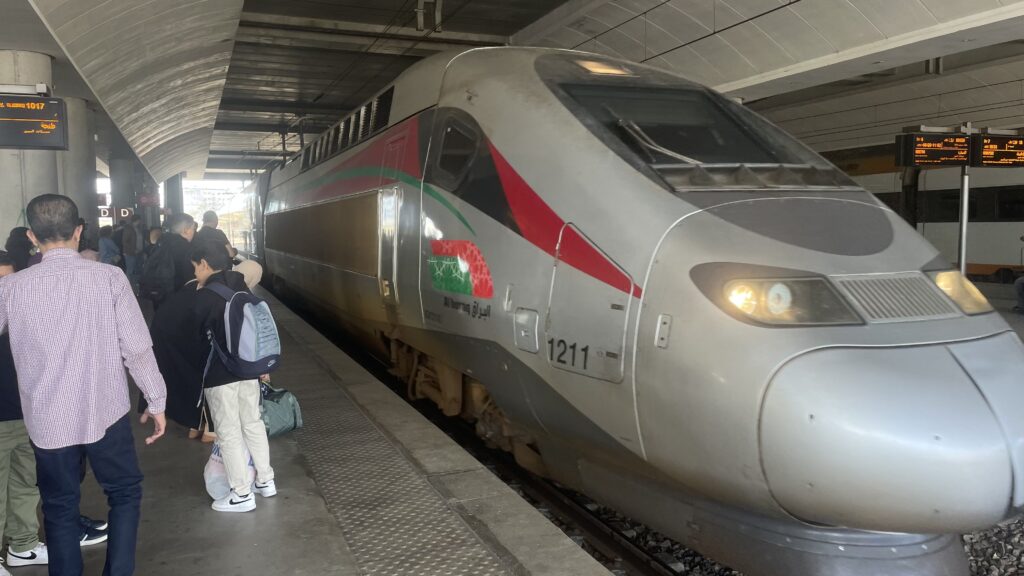
Another conductor helps you onboard and then the train pushes off the train station. While the conductor looks at your ticket, you see there are seats above and below. You are seat number eighty-nine. The conductor gestures to the stairs without scanning your ticket. Climbing the stairs, you can tell the Al-Boraq is very sophisticated. It is very clean and has great additions to it such as lounge area and mirror. You pass a seating area with an outlet, and click a button to open the sliding doors. A swoosh sound accompanies the opening door. Then you enter into the area where there are dozens of seats, in different arrangements. You walk in slowly, luggage racks are on your right and left. A few people look in your direction. The seatings are in pairs or in a quad with a table separating two pairs of seats facing each other. Seat number is eighty-nine is one of the quad seats. An old lady, with a large purse on her lap, has taken your seat.
“I am number eighty-nine,” you tell her, showing your ticket. You highly doubt she understands English, but you hope that at least someone of the other two occupied seats would say something.
The old lady looks confused, and points to the empty aisle seat. She adds in a smile. Knowing that there are assigned seats, you don’t want to take another person’s seat and is determined to get your seat, especially because it is the window seat. You point to the seat number on your ticket and then point to the number above the seat.
“Her seat is that one,” a girl says behind a book, pointing at the empty aisle seat. She settles her book on the table and raises her head to you; she’s seated next to the old lady, near the aisle. “She has trouble sitting against the direction of the train. She gets dizzy if she sits with her back against the train’s direction.”
You hesitate a moment. Typically, you would fight for the window seat. It is your right but knowing that you are in a foreign country, you smile to the old lady and take the aisle seat near a young adult man who looks asleep against the window. You place your backpack on the rack above. The girl returned to her book; the title is written in French. But her English was very good for someone who lived in a country that has French as their second language.
The train continues onward; its speed not as impressive. As it heads to the next station, you put one and two together and come to understand that it had not reached its top speed because the other trains use the same tracks. In a few minutes, the train arrives in Kenitra, another major city with at least half a dozen tracks. It stops there for three minutes, picks up a few people, and then it leaves the region and sprints up north, to Tangier. It takes a minute or two for it to gain speed, but it is not long until it reaches three hundred kilometers per hour. It runs so smoothly that you barely feel its movement.
Looking out the window, you find yourself smiling. You’re not sure why at first, but once you think about it, you realize the train ride is different from a train ride in your home country. Working as an architect, you never saw any joy in commuting, and even when you commuted to do something fun with family or friends, you never found the fun in that commute, but now, as you’re sitting in al-Boraq, hundreds of miles away from your home country, you find the journey itself has a degree of satisfaction, not just the destination part. You rest your head against the headrest and close your eyes for a moment. It feels good, away from all the stress. In the moment, if you could wish for one thing, you’d want friends.
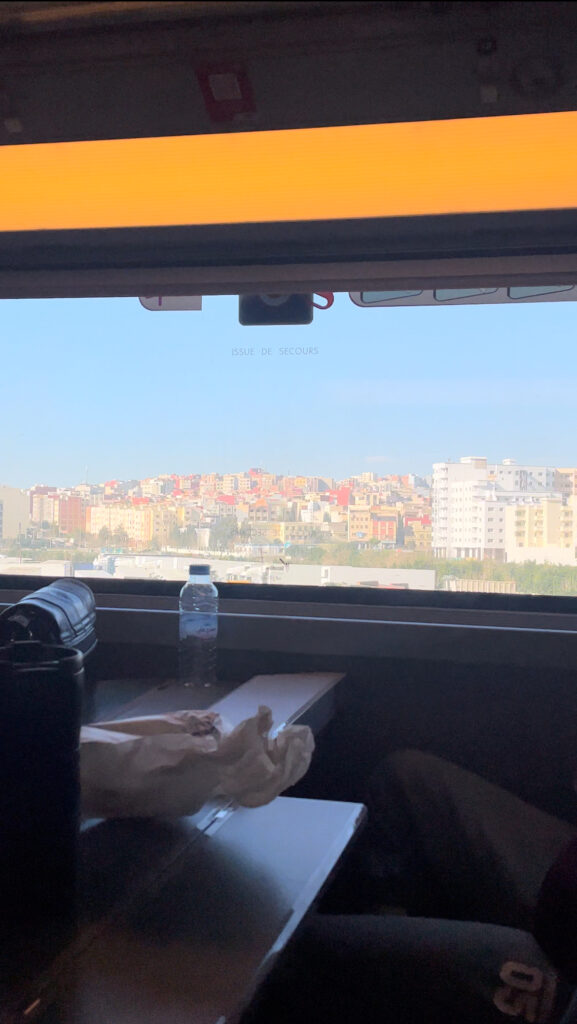
In about fifty minutes, a lady on the intercom announces the train will arrive in Tangier shortly. Looking outside the window, you can see the houses from the outskirts of the major city populate the land. For most of the fifty minutes between Kenitra and Tangier, the train raced through farmland, with little buildings in sight. You feel energized as you toss your bag over your shoulder and follow everyone out the train and then into Tangier train station. Looking up, you see that it is very similar to the one in Rabat, with glass panels looking out into the tracks and a see-through clock up in the middle. Though this station doesn’t have escalators. You simply walk in through the glass doors, into the train station. It is packed, filled with hundreds of travelers, waiting to depart or having just arrived in Tangier. There are shops on your right: phone services, cafes, and convenience stores. Walking to the exit, you can’t wait to explore Tangier, and possibly Tetouan.

